|
Highlights of CSEE 4840 Embedded System Design
|
| Spring 2007
|
| Columbia University, Computer Engineering Program
|
| Prof. Stephen A. Edwards
|
The main focus of
CSEE 4840 Embedded System Design
is an independent
group project on the design and implementation of a small system
involving hardware and software. The students implemented the
projects on an FPGA board (the DE2 from
Altera corporation)
This board contains a Cyclone II FPGA capable of
holding both a 32-bit RISC microprocessor core (a ``NIOS'') and
quite a lot of student-designed custom logic.
Every project incorporated a combination of C code running
on the processor and custom logic written in the VHDL hardware
description language.
Below are selected projects from the spring 2007 course to give you an
idea of the breath and complexity of these projects.
PAC-EDWARDS
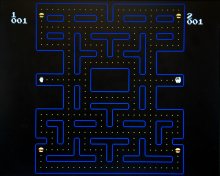
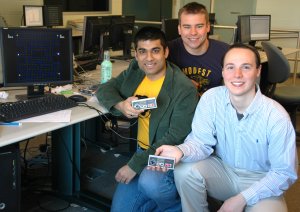
 Their final report
Their final report
Michael Pierorazio
Varun Mehta
Jeffrey Cropsey
This (smartass) group built a two-player Pac-Man-like game with me as a motif.
They told me they were building a maze game, but didn't reveal the motif until
the demo day.
They built a tile-based background generator that automatically rounded
the edges of the maze and superimposed me-shaped sprites on top of it, much
like the original Pac-Man game. To top it off, they interfaced
Nintendo Entertainment System
controllers to the FPGA board to provide a genuine arcade-game experience.
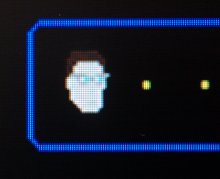
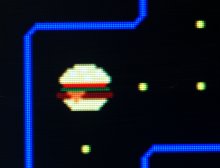
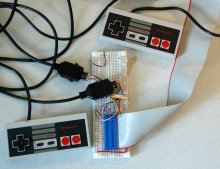
Button Hero
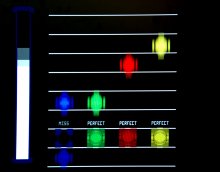
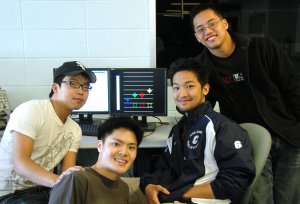
 Their final report
Their final report
Kenneth Yu
Charles Lam
George Liao
JooHan Chang
This group built a video game loosely based on Guitar Hero called Button
Hero. The objective is to press the four buttons on the Altera board in
perfect time with the falling objects. Doing this at the right time
increases your score; missing lowers it.
They built a custom video generator capable of drawing eight sprites
over a background consisting of lines, a score display, and various
announcements about the game (``perfect,'' ``press any key to start,'' etc.)
Imagic
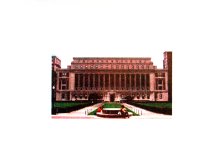
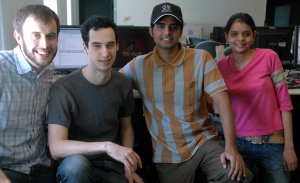
 Their final report
Their final report
Abhilash Itharaju
Nalini Vasudevan
Vitaliy Shchupak
Walter Dearing
This group built a digital picture frame. It read SD/MMC cards
from the built-in slot on the DE2 board, decoded a FAT32 filesystem thereon,
decoded all the JPEG files that it found, and displayed them on the flat-panel
monitors using a VGA controller of their own devising. This remarkable
group also has the distinction of being the only one in history ever
to have completed the project before it was due.
Network Clue
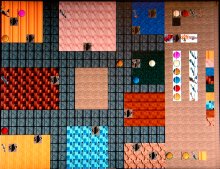
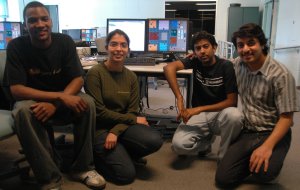
 Their final report
Their final report
Sampada Sonalkar
Gaurav Gupta
Thomas Mwakibinga
Khalef Hosany
This group built a networked, multi-player version of the board game ``Clue.''
They built a custom tile-based video display controller that could display
the game board and player pieces and controlled it with software that
communicated over Ethernet with other boards, allowing multiple players
to observe the actions of others, but not their cards.
Life
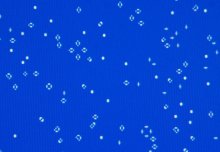
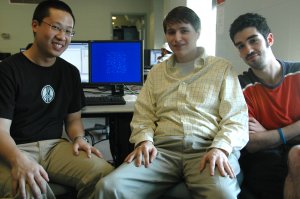
 Their final report
Their final report
Juan Gutierrez
Steven Chen
Vincenzo Zarrillo
This group built a hardware-based simulator for
Conway's Game of Life. By
doing the critical component in hardware, they were able to achieve 60
generations per second, one of the fastest rates I have ever seen.












